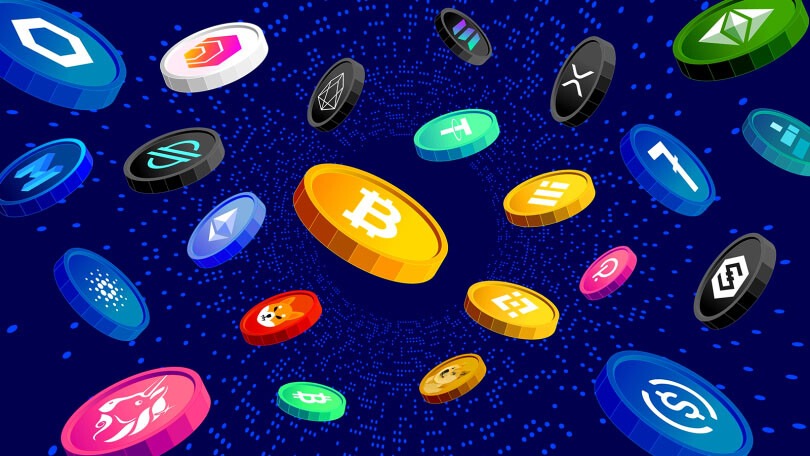- Explore the rise of loyalty points programs in the crypto industry, replacing token airdrops as a user engagement strategy.
- Learn about the challenges and criticisms faced by loyalty points programs, including regulatory ambiguity and lack of transparency.
- Discover the success and controversy surrounding blockchain projects like Blast, Manta, and Mantle, as they venture into loyalty points programs to attract users and gamify protocols.
In the ever-evolving landscape of digital assets, a new trend has emerged – the rise of loyalty points programs. As digital-asset startups seek to attract and retain users, they are increasingly turning to airline-like loyalty points as a means of incentivizing engagement. This article delves into the growing phenomenon of loyalty points programs within the crypto industry, examining their motivations, challenges, and implications for users and regulators alike.
The Shift from Token Airdrops to Loyalty Points Programs
Loyalty programs have gained traction as an alternative to the once-popular marketing tactic of token airdrops. Token airdrops involved projects giving away crypto tokens to users, but their effectiveness in retaining users has waned over time. Additionally, increased regulatory scrutiny surrounding tokens themselves has prompted the industry to reevaluate this approach.
However, the fledgling loyalty points programs have faced criticism for their lack of transparency. Many projects have yet to define how these points can be used, leaving users in the dark about their potential benefits. Moreover, experts caution that such programs may pose their own regulatory risks, adding another layer of complexity to their implementation.
The Rise of Blockchain Projects with Loyalty Points Programs
The trend of loyalty points programs gained significant momentum in November when the blockchain project Blast enticed users by rewarding them with points. Despite not having a live blockchain, Blast managed to attract over $1.3 billion worth of cryptocurrencies from users who could only speculate on the future utility of these points. However, the program faced backlash from the crypto community, with critics likening it to a marketing ploy or even a Ponzi scheme.
Blast’s success, albeit controversial, inspired other blockchain projects such as Manta and Mantle to launch their own loyalty points programs. These projects experienced substantial growth in the total value of cryptocurrencies sent to their platforms, with Manta attracting $1.59 billion worth of tokens and Mantle receiving $312 million. This surge in interest indicates a maturing industry that is exploring innovative ways to gamify protocols and engage a broader user base.
The Evolution of Marketing Strategies in the Crypto Space
The adoption of loyalty points programs signifies a notable shift in the product, strategy, and marketing landscape of the cryptocurrency industry. Industry analysts, such as Christopher Newhouse from digital-asset venture fund Cumberland Labs, perceive this shift as a natural progression towards attracting and retaining users by leveraging gamification and incentivization.
While loyalty points programs are not novel outside the crypto realm, they had been overshadowed by the popularity of token airdrops and their ability to rapidly onboard new users. However, token airdrops have their downsides. Airdrop farmers, for instance, exploit projects solely for the purpose of acquiring free tokens before swiftly moving on. Furthermore, regulatory agencies have been closely monitoring airdrop activities, intensifying the need for innovative approaches.
Navigating Regulatory Challenges and Uncertainties
The regulatory landscape surrounding loyalty points programs remains uncertain. Determining whether these points should be considered securities poses a significant challenge, particularly since most tokens are deemed securities by the US Securities and Exchange Commission (SEC), yet remain unregistered. By transitioning to point rewards from airdrops, projects attempt to navigate this regulatory ambiguity. Emily Meyers, General Counsel at crypto venture fund Electric Capital, suggests that points launches can offer a cheaper and faster alternative to complying with securities laws for token launches. However, if the points themselves are designed as cryptocurrencies, albeit without being on the blockchain, the regulatory risks persist.
Many projects that have introduced loyalty points programs have been deliberately vague about the role and value of their points. This lack of clarity has fueled speculation among crypto traders, leading to platforms like Whales Market where users can trade points from different projects without fully understanding their purpose. Consequently, the points market remains relatively obscure, unlike airdrops, making it challenging to estimate its size and impact.
Conclusion
As digital-asset startups seek novel ways to engage and incentivize users, the emergence of loyalty points programs represents a significant shift in the crypto industry’s marketing landscape. While these programs bring their own set of challenges, including regulatory uncertainties and transparency concerns, they also provide an opportunity for projects to gamify their protocols and foster long-term user engagement. As the industry continues to mature, it will be fascinating to witness the evolution of loyalty points programs and their impact on the broader digital-asset ecosystem.
Disclaimer
The information provided in this article is for informational purposes only and should not be considered financial advice. The article does not offer sufficient information to make investment decisions, nor does it constitute an offer, recommendation, or solicitation to buy or sell any financial instrument. The content is opinion of the author and does not reflect any view or suggestion or any kind of advise from CryptoNewsBytes.com. The author declares he does not hold any of the above mentioned tokens or received any incentive from any company.
image source





